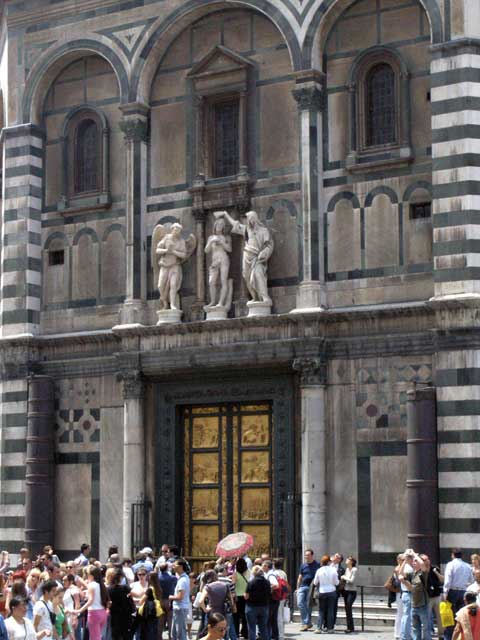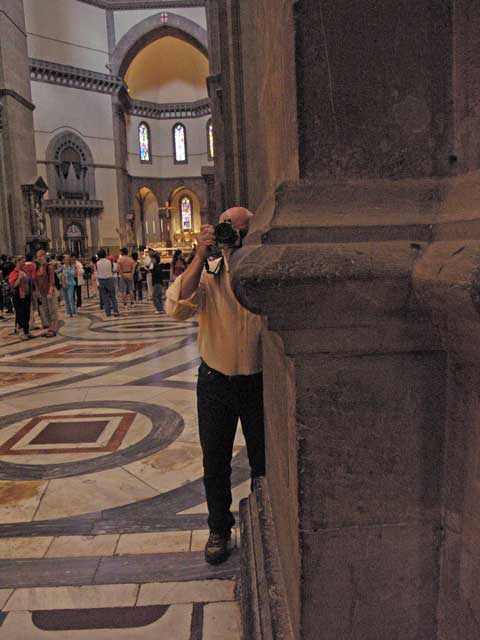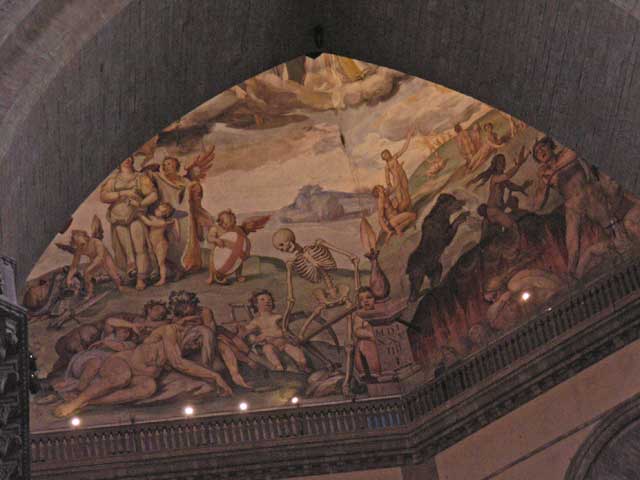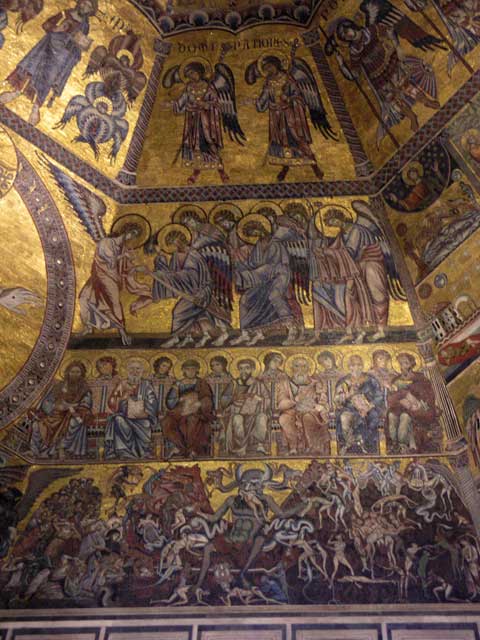
The East Doors of the Baptistery; statues above the door depict St. John the Baptist baptizing Christ.

This was the last day on our own before the Country Walkers tour kicks off. We were at some loose ends and I thought about trying to figure out how to get to Fiesole, the Roman/Etruscan hill town that predates the settlement by the river. Ultimately we filled the day and didn’t get there on this trip.
We started the day going back to the internet café where we caught up on our email, and while Jonathan read some of his favorite blogs, I was catching up on the news. Swinging back by the hotel to grab our cameras and umbrellas (just in case), we headed off to the Duomo.
Admission to the cathedral is free and they allow cameras (no flash). This space had the same feel as San Lorenzo, although a bit more ornate. There was a mosaic over the entry door with frescos on either side – a Byzantine piece surrounded by what looks like Renaissance work. The church’s proper name is Santa Maria del Fiore – St. Mary of the Flowers, and the mosaic depicts Christ crowning Mary as queen of heaven. The nave was cordoned off so that we couldn’t get under Brunelleschi’s dome although you could catch a glimpse of the frescos that decorate its underside. We went downstairs where the remains of the predecessor cathedral, St. Reparata, have been excavated, but we decided not to pay the admission to enter the exhibit. Leaving the cathedral, we went to check on the line for going up into the dome (while we were in the cathedral, you could see people up there), but the line was long and it didn’t look like it was moving very fast at all. So we went in to the Baptistery (at a cost). The Baptistery is the oldest of the building in the square and the gold on the brightly colored mosaics gracing the interior of the dome speak to Byzantine influences.

The East Doors of the Baptistery; statues above the door depict St. John the Baptist baptizing Christ.

Jonathan bracing his camera on a pillar - necessary to secure clear (as opposed to fuzzy) images in this light.

Looking up into the dome - the balustrade marks a walkway where you could see tourists up in the dome.

The Last Judgement - panel to the right - check out the devil eating the sinner on the lowest level.
We went around the cathedral to the museum of the cathedral. In this museum they have the original panels from the baptistery’s famous east doors (facing the cathedral) crafted by Lorenzo Ghiberti. I remembered these panels from my earlier trip to Florence 35 years ago when they were still mounted on the doors of the baptistery. The replicas in place are gilded and very bright, while the originals have lost that luster. The old panels are displayed in individual Lucite cases under nitrogen atmosphere to protect them from further oxidation. [There are a total of 10 panels, but only eight were on exhibit.] Also in the museum is an unfinished Pietà by Michelangelo – once again I find that raw element adds power to the sculpture. The face on the figure of Nicodemus in this piece is a self portrait of the sculptor – apparently Nicodemus was supposed to have been a sculptor and painter himself, and it was not that uncommon for artists depicting the scene to use Nicodemus as a self-portrait due to the affinity.
After eating lunch just off the square, we headed off to the Pitti Palace to spend the rest of the afternoon wandering through the gardens. We returned to the hotel for a quick nap before searching for dinner ending up in Piazza del Carmine at the Trattoria del Carmine, where the menu was all in Italian with no translations. We both started off with proscuitto and melon, which I followed with a squash flower and pea risotto. I had grilled lamb as my second – which was a bit dry – while Jonathan followed his soup with a fried seafood platter that he devoured with much enthusiasm.